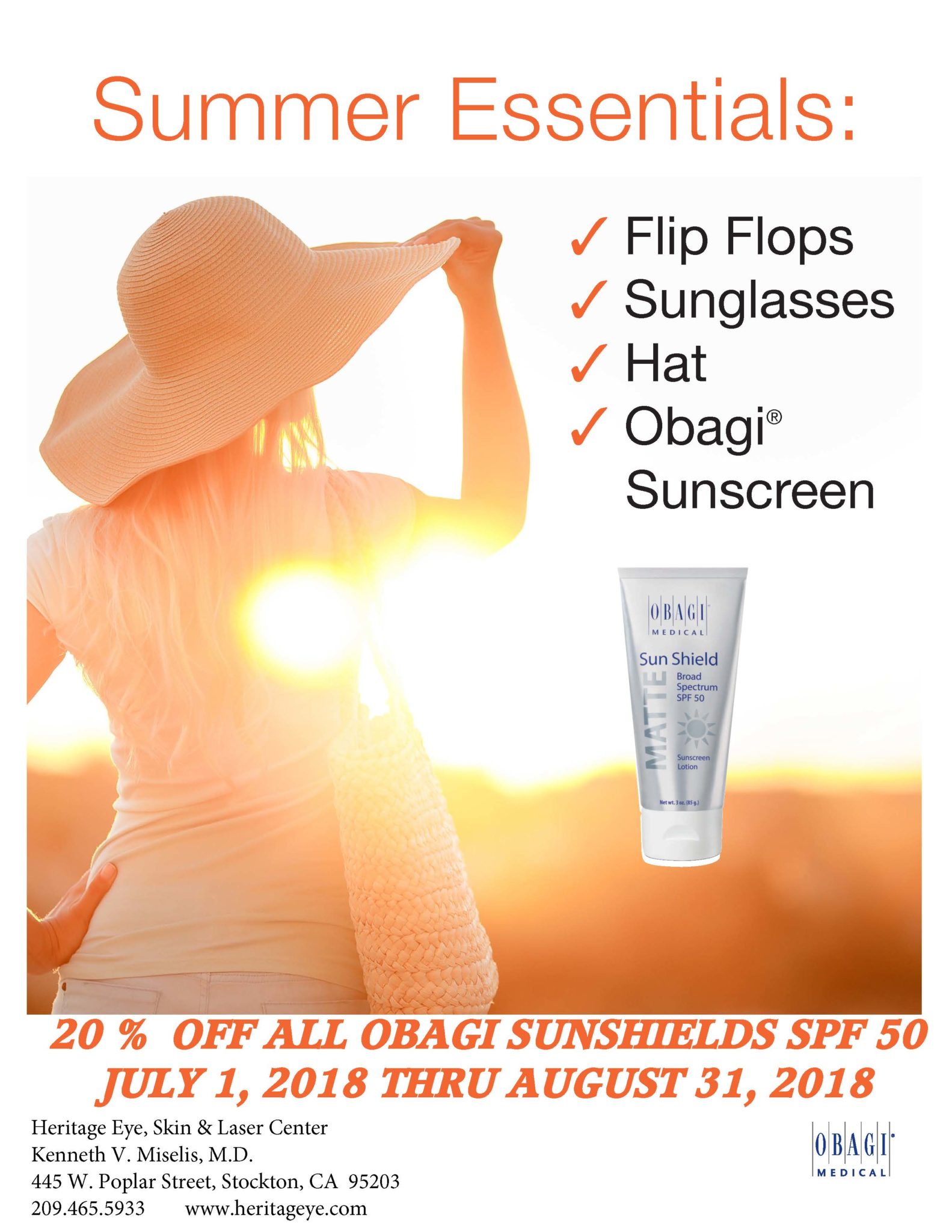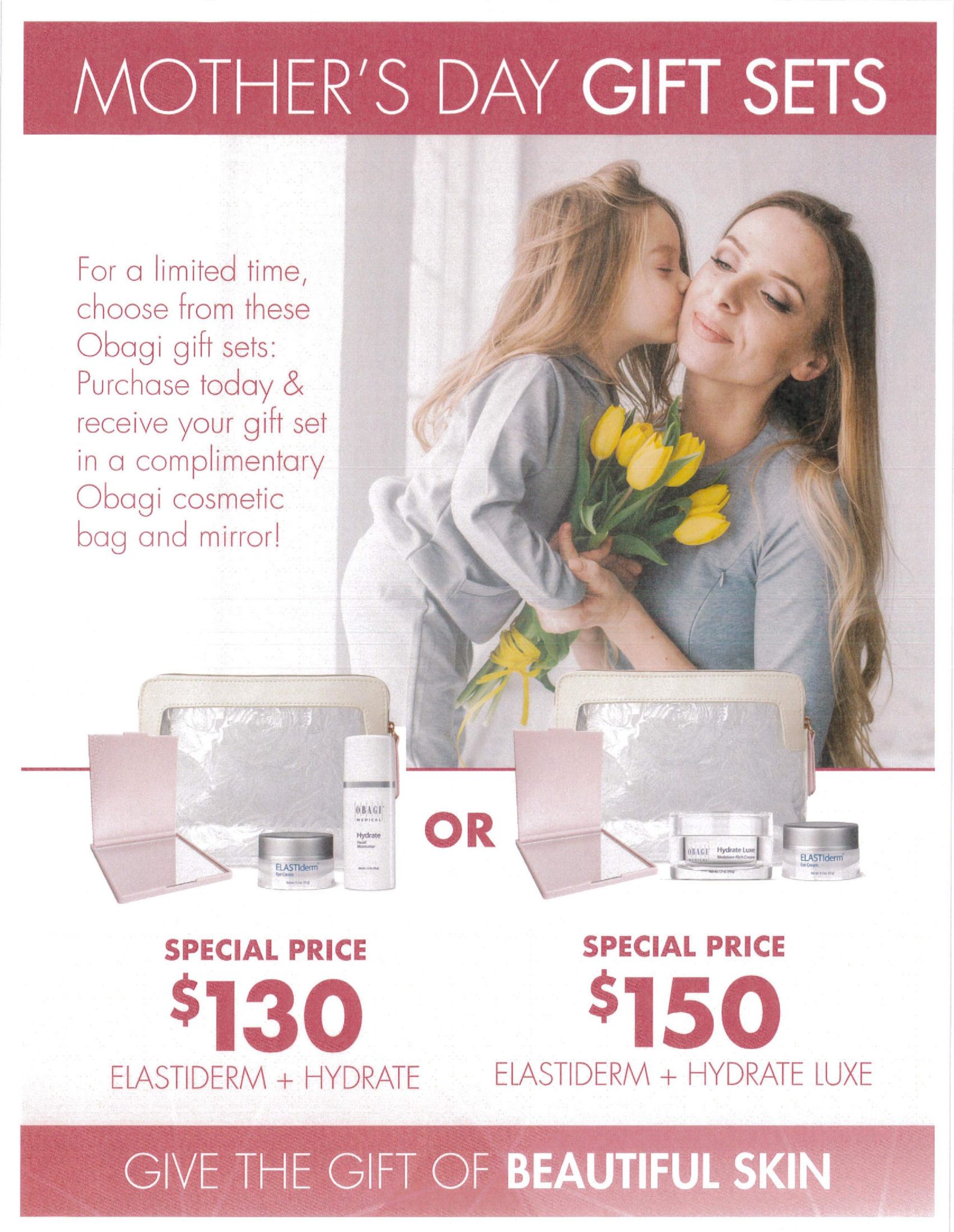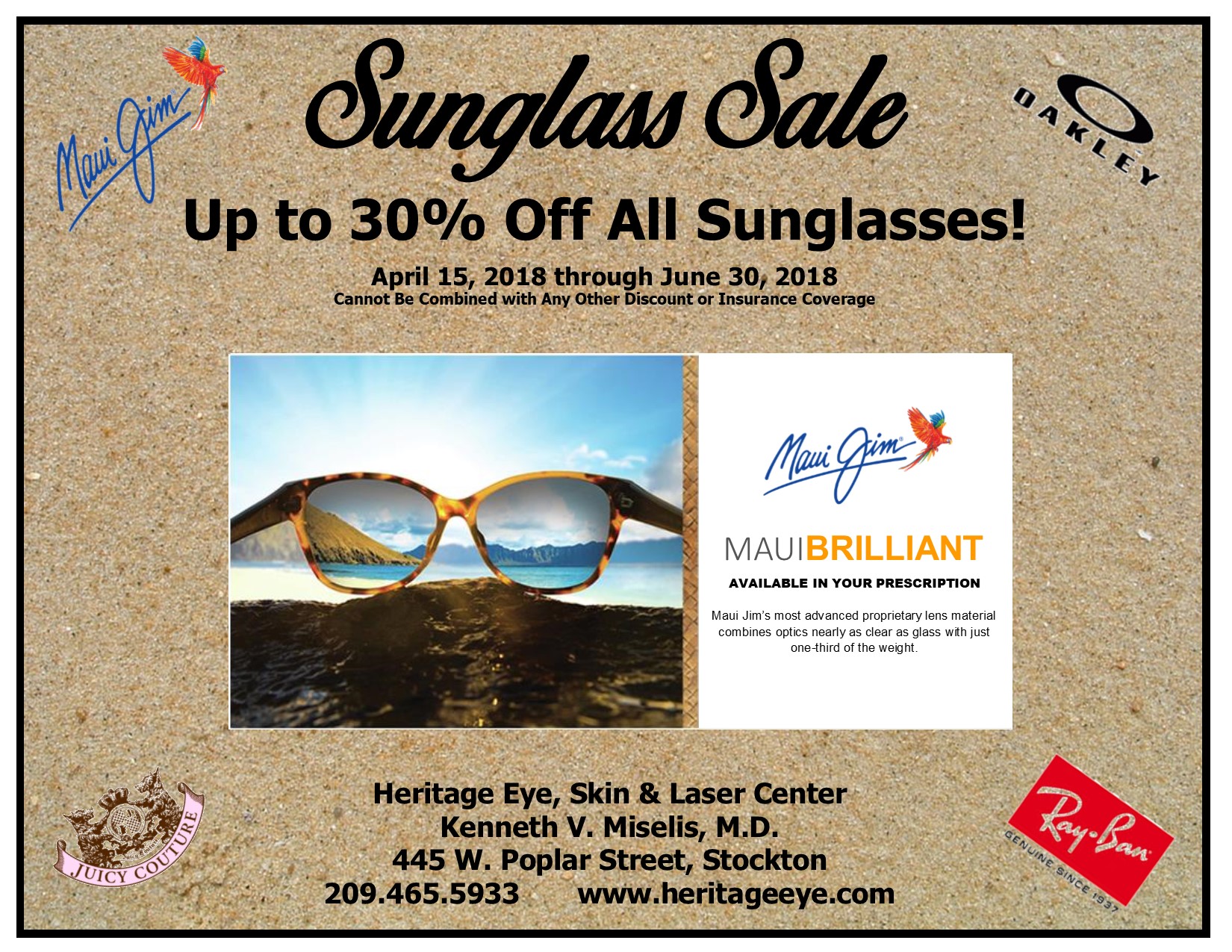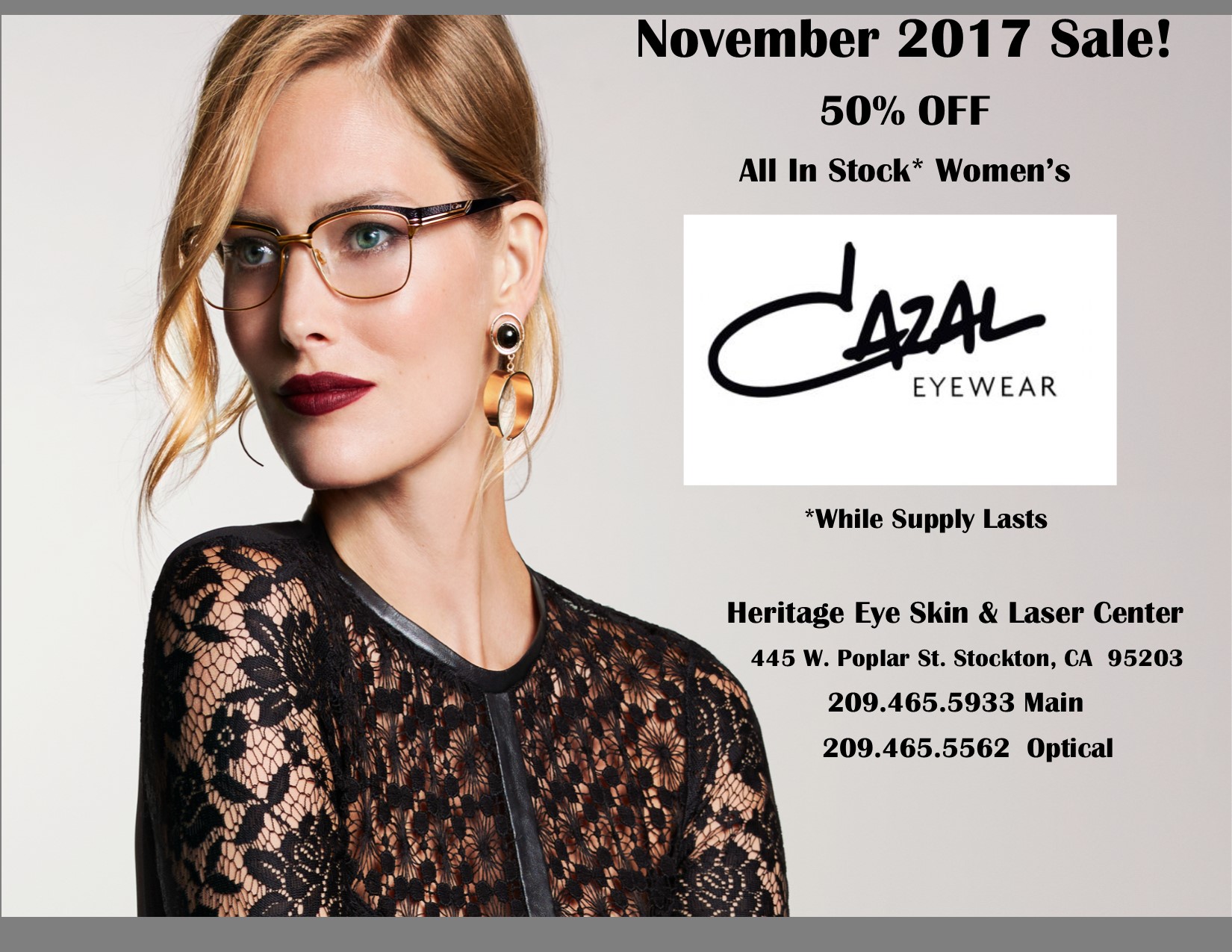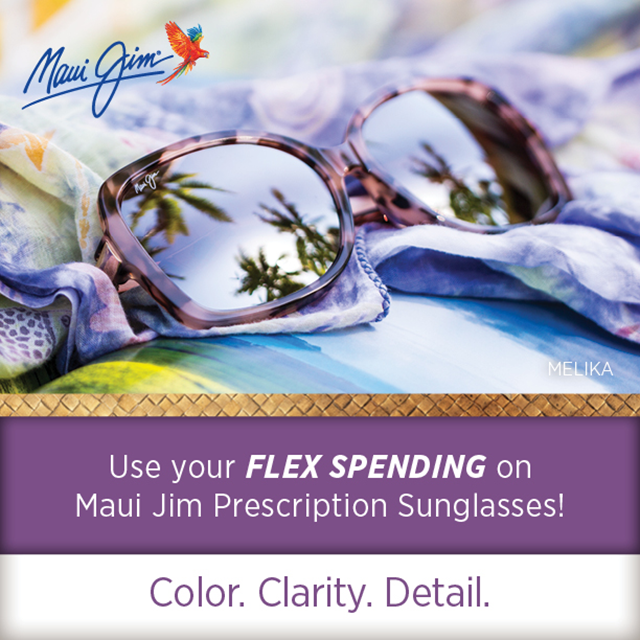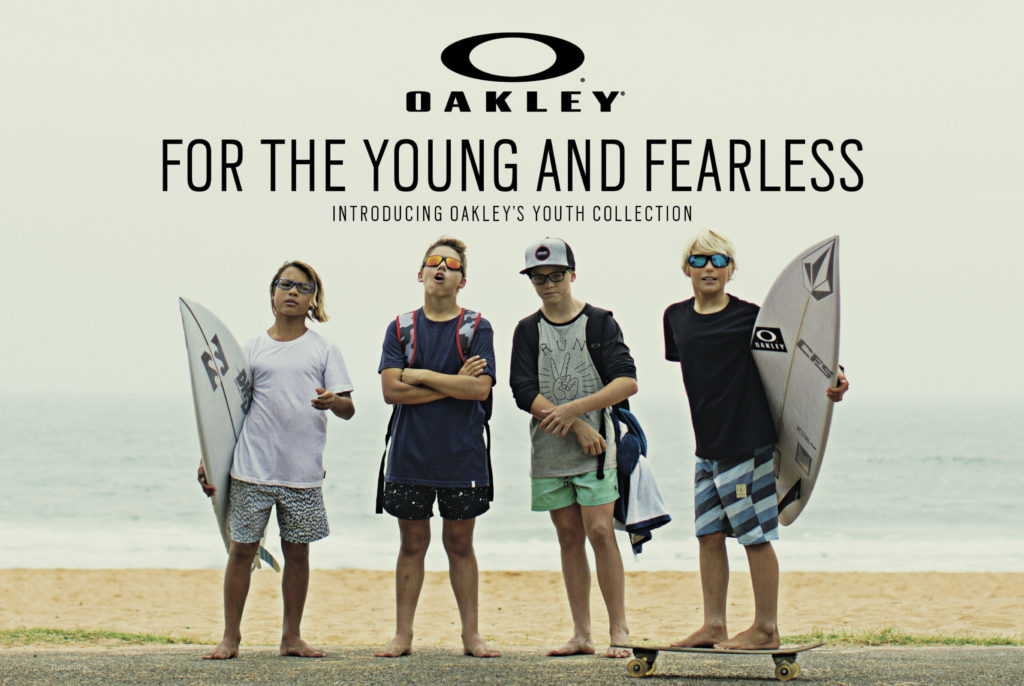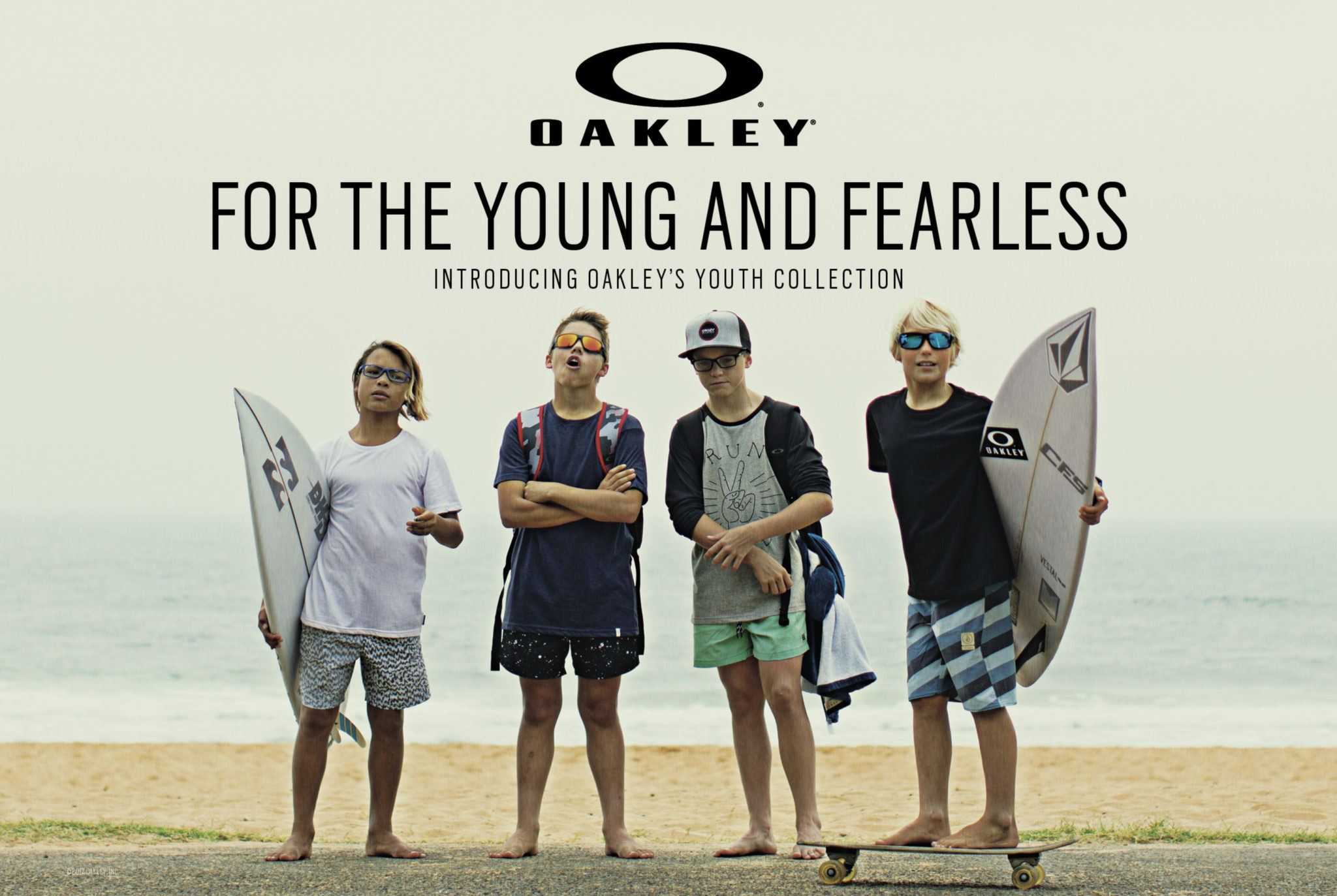
Fall Eye Care Tips
Fall is a time for changing weather, changes in allergies, and starting a new grade level in school. Protect your vision and eye health this fall with these seasonal tips.
Vision Screenings vs. Exams
The vision screenings children often receive at school are not the same as a comprehensive eye exam. Vision screenings are just that – screenings. Start the school year right by scheduling a comprehensive eye exam for your children – and yourself!
Wash Your Hands
Stay healthy by washing your hands frequently and avoid touching your eyes to prevent the spread of the flu and eye-related illnesses like conjunctivitis (pink eye).
Keep Rockin’ Your Sunglasses
Even though the season has changed, keep wearing your sunglasses. When it is cloudy or overcast outside UV rays can penetrate cloud cover, in fact on a day that is slightly overcast, UV levels are about the same as on a clear day.
Fall Eye Allergies
Fall can stir up a myriad of eye allergies, most of which are airborne, including pollen, mold, dust, and pet dander. If you can, try to avoid what is causing your eye allergies. You can also wear sunglasses and drive with your windows closed to help shield your eyes from allergens
Eye Safety First!
Remember to wear eye protection while cleaning, cooking, doing yard work, or working in the garage. Half of all eye injuries occur when doing these everyday chores, and 90 percent of all eye injuries are preventable by wearing the proper eye protection, according to the American Academy of Ophthalmology.
Make Halloween a Treat
Save Yourself a Frightful Trip to the Emergency Room this Halloween.
- Wear the proper eye protection while you and your children are carving and decorating pumpkins.
- Costumes and accessories can harm eyes. Be aware of fake fingernails, broom sticks, swords, light sabers, and magic wands. Talk to your children about the proper way to use and hold their costume accessories.

10 Reasons To Avoid Cheap Glasses
After all, why should you pay hundreds of dollars for prescription eyeglasses when cheap glasses look every bit as good, right?
As much as we all want to avoid spending hard-earned money unwisely, deals that seem too good to be true when buying glasses are no different than deals that sound too good to be true when buying anything else — you may save money up front, but the product often doesn’t live up to your expectations.
And when it comes to eyewear, some cheap glasses can actually cause harm to your eyes that you’re not even aware of.
Cheap Glasses: Buyer Beware
Being a wise eyewear consumer requires a little due diligence to understand factors that affect the quality and value of eyeglasses and sunglasses.
Here are 10 things to be aware of if you’re considering cheap eyeglasses or sunglasses:
1. Know what’s being cut to offer lower prices.
Online retailers that sell cheap eyeglasses and sunglasses often say they can offer low prices because they don’t have the same expenses associated with a “brick-and-mortar” store, such as the high rent paid in retail shopping areas.
But what they often don’t tell you is their lower prices come with a hidden cost — you no longer get the personalized attention and fitting expertise of a qualified optician. That’s a huge part of the value equation.
Instead, you’re on your own to select a frame and lenses for your cheap glasses and hope for the best.
2. Beware of claims of “same top quality.”
Sellers of cheap eyeglasses and cheap sunglasses are quick to claim they are providing glasses of the “same top quality” as eyewear you purchase from your local eye care professional.
But how do they determine that?
The fact is, there are significant differences in the scratch resistance of different lenses and lens coatings, different levels of optical performance among different lens materials and brands, and different levels of comfort and durability among different frames — even among frames with the same brand name.
Also, many online retailers who sell cheap prescription glasses fabricate the lenses in their own optical labs rather than using a wholesale optical laboratory that specializes in providing this service to eye care professionals. And while this might help you get your cheap glasses quicker than eyewear purchased in an optical store, in some cases quality of the finished product may suffer.
3. A bigger selection often isn’t a better selection — it’s just more confusing.
Online retailers of cheap glasses point out that optical stores cannot match their vast virtual inventory of frames. This may be true. But how many of those hundreds or thousands of frames are a good fit for your head and face? And who will help you choose?
4. Virtual and home try-ons can’t insure satisfaction.
If you’re buying cheap glasses online, you often will have access to a “virtual try-on” feature — where you upload a forward-facing, closeup photo of yourself and you can then superimpose images of different frames on your face to see how they look.
But while a virtual try-on can give you a rough idea of how you’ll look wearing different frames, it can’t tell you anything about how the frames will feel. It also can’t demonstrate the detailing and workmanship of the frame.
Also, depending on the quality of the virtual try-on tool, the size of the eyewear might not be accurate — the frames might look larger or smaller than they actually are. And it’s not unusual for the color of the actual frame to look noticeably different than the color shown online.
Even if an online retailer sends you a sample of frames to try on at home before you make your final purchase, you won’t know whether the glasses will be too heavy after the prescription lenses are added…or how thick those lenses will be. This is especially important if you are sensitive to the weight of eyeglasses because you have sinus problems or delicate skin.
All these potential problems can be avoided by being fitted with glasses in person by a skilled optician.
5. Cheap sunglasses can do more harm than good.
Cheap sunglasses sometimes look nearly identical to premium quality sunglasses. They can even seem to provide equal performance in bright sunlight. But they also can be doing more harm than good.
The level of protection sunglasses provide to shield your eyes from the sun’s harmful ultraviolet (UV) rays has nothing to do with the color or darkness of the lenses. And it’s impossible for you to feel how well your eyes are being protected from these damaging rays while you’re wearing the sunglasses.
So it’s possible for two different pairs of sunglasses to look (and even feel) the same, but one is providing a much better level of eye protection than the other.
Cheap sunglasses — even those labeled “polarized” and “100% UV protection” — often allow harmful violet (“near-UV”) and blue light to penetrate the eye and potentially cause damage over time.
Your eye care professional can explain which trusted brands of sunglass lenses offer the best protection from harmful rays and the preferred visible light transmittance for your outdoor activities and visual needs.
6. Cheap reading glasses can cause eyestrain — or worse.
Cheap reading glasses sold in discount stores can help you see more clearly up close if you’re over age 40 and experiencing the normal age-related loss of focusing called presbyopia.
But it’s easy to choose the wrong power, and the optical quality of cheap reading glasses typically is not as good as a customized pair of glasses for computer use and reading.
Also, cheap reading glasses often provide no protection from high-energy blue light emitted from computer screens and other digital devices. [Learn why blue light from digital devices may be harmful.]
7. Cheap eyeglass frames can cause skin irritation — or worse.
At first glance, some cheap eyeglass frames may look like more expensive frames. But often, they are made of low-grade materials that can cause skin irritation over time. Cheap plastic frames can get bleached by UV rays and the finish can roughen after a few months of wear. Cheap metal frames often contain nickel alloys that can cause skin irritation; others can discolor your skin.
Also (and more disturbing), cheap eyeglass frames and cheap sunglasses occasionally are recalled and removed from the market because they contain lead paint or other toxic substances.
8. Can you be sure sellers of cheap glasses will be around tomorrow?
Warranties on eyeglasses and sunglasses are only as good as the reliability of the retailer who provides them. Can you really trust an online start-up or mall kiosk to honor a warranty on their cheap glasses and sunglasses?
9. Does the “At this price, I’ll buy two pair of glasses and still save money” argument make sense?
The bargain basement price of some cheap eyeglasses and sunglasses makes it tempting to buy several pairs. But does it really make sense to spend money on something as important as eyewear when there’s a good chance it won’t be durable enough to last more than a few months?
And what if the quality of your vision with cheap glasses and sunglasses isn’t as good as it should be? What do you do then?
10. Cheap eyeglasses and sunglasses can rob you of the opportunity to see and look your best — and fully protect your eyes for a lifetime of good vision.
Though you may see acceptably well with cheap glasses, are you really seeing your best and doing everything you can to protect your eyesight?
A knowledgeable optician can educate you about the latest advances in eyeglass lens technology, including:
- Photochromic lenses
- Progressive lenses
- Computer glasses
- Anti-reflective coating
- Impact-resistant (polycarbonate) lenses
- Sports eyewear
- Sunglasses
Even if you choose only one or two of these premium products, it will help you come closer to seeing your absolute best and/or more fully protecting your eyes from injury and damaging radiation.
Budget-Stretching Tips When Buying Glasses
So what can you do if you or your family members need glasses and you want the best value possible?
Here are a few tips to help you stretch your budget and get all the benefits of high quality eyeglasses and prescription sunglasses:
- Take advantage of your vision insurance benefits. Many people fail to use the vision insurance plans(such as VSP and EyeMed) that they are enrolled in as part of their benefits package at work. These plans essentially work like a gift card program — just show your card and you get significant discounts on eye care and quality eyewear. Your HR representative at work can help you locate a participating eye care provider.
- Ask about bundles. Many optical stores provide a discount on premium eyewear products such as anti-reflective coating, photochromic lenses and progressive lenses if you purchase them as part of a bundled package. Ask your optician for details.
- Know the terms and conditions of warranties. Premium eyewear can be a better value than cheap glasses if it comes with a warranty against lens scratches and frame materials and workmanship. Warranties are particularly valuable if you work or live in a harsh environment and for children’s eyeglasses. Ask your optician to explain the terms and conditions of warranties included with your eyeglasses and sunglasses.
Also, ask your eye care professional about possible discounts for multiple purchases, special promotions on specific frames and lenses, and financing plans for eyewear purchases to make quality eyewear more affordable. ![]()

Children’s Sunglasses: Choosing the Best Sun Protection for Kids’ Eyes
Ultraviolet (UV) radiation and blue light (also called high-energy visible, or HEV, light) from sunlight appear to increase the risk of multiple age-related eye problems, including cataracts and macular degeneration. Researchers say the more exposure you’ve had to the sun’s harmful UV and HEV rays during your lifetime, the more at risk you may be for these sight-threatening conditions.

The best children’s sunglasses block 100 percent of the sun’s UV rays and have impact-resistant polycarbonate lenses.
Because children tend to spend more time outdoors than most adults, some experts say nearly half of a person’s lifetime exposure to ultraviolet radiation can take place by age 18. (Other research cited by The Skin Cancer Foundation suggests the amount of lifetime exposure to UV radiation sustained by age 18 is less than 25 percent.)
Also, children are more susceptible to damage to the light-sensitive retina at the back of the eye from UV rays because the lens inside a child’s eye is less capable of blocking UV than an adult lens, enabling more of this harmful radiation to penetrate deep into the eye.
And nearly all high-energy blue light reaches the retinas of children and adults alike, because the corneaand lens of the human eye are not capable of absorbing these rays, which have been shown to damage photosensitive cells of the retina in laboratory studies.
These factors make it very important for all children, even infants, to wear UV- and HEV-blocking sunglasses anytime they are outdoors in daylight hours. This is true even on cloudy and overcast days, because most UV rays (which are invisible) and some HEV rays can penetrate cloud cover.
By investing in quality children’s sunglasses, you are helping your kids enjoy a lifetime of good vision.
Children’s Sunglasses and UV Protection
According to Prevent Blindness America, children’s sunglasses should block 99 to 100 percent of both types of untraviolet rays: UVA and UVB.

You don’t have to spend a lot to get high-quality sunglasses for your kids. Shown here is the Choco Grape style in the Bling Collection by Eyes Cream Shades.
UVA is lower-energy ultraviolet radiation that can penetrate skin and eyes more deeply. UVA rays tan your skin, but they also cause your skin to wrinkle and show other signs of “photo-aging.” And because UVA rays can penetrate the eye, they have been implicated in the development of both cataracts and macular degeneration.
UVA rays account for up to 95 percent of solar UV radiation reaching the Earth’s surface, according to the Skin Cancer Foundation.
UVB is high-energy ultraviolet radiation that causes your skin to burn. The cornea blocks most UVB rays from entering the eye, protecting internal eye tissues from these high-energy rays. But overexposure to UV light can cause a serious and painful “sunburn” of the cornea called photokeratitis, which can cause a temporary loss of vision that is commonly called “snow blindness.”
SEE ALSO: Should Your Teen Wear Contacts? Click here to learn more >
In addition to causing eye problems, both UVA and UVB rays can cause skin cancer of the face, including the delicate skin of the eyelids and the area around the eyes. UV exposure also has been associated with growths on the surface of the eye called pingueculae and pterygia.
Be wary of children’s sunglasses with labels that say the lenses, “block UV rays,” but don’t specify the actual percentage of UV radiation the lenses absorb. In some cases, your eye care practitioner can use an optical instrument to determine the exact level of UV protection your child’s sunglasses provide.
Also, be aware that UV radiation penetrates clouds. Encourage your kids to wear their sunglasses even on overcast days to protect their eyes.
Recommended Features of Children’s Sunglasses
In addition to having lenses that block 100 percent of the sun’s UVA and UVB rays and a significant amount of potentially harmful blue light, most eye doctors recommend children’s sunglasses also have these desirable features:
- Impact-resistant lenses. The best lenses for children’s sunglasses are made of polycarbonate. Polycarbonate lenses are up to 10 times more impact-resistant than standard plastic lenses for superior eye protection during sports and other play. Polycarbonate lenses also are lighter than glass or standard plastic lenses for greater wearing comfort.
- Large, close-fitting frame. For the best protection from the sun’s ultraviolet rays and to keep dust and other debris from getting in your child’s eyes, a relatively large yet close-fitting frame is the best design for children’s sunglasses.
- “Unbreakable” frame material. Look for children’s sunglasses that have flexible frames to avoid breakage and potential eye or facial injury from a frame that snaps upon impact.
- Spring hinges. Hinges that extend beyond 90 degrees and have a spring action to keep the fit of the frame snug will decrease the risk of your child’s sunglasses falling off or getting damaged during sports and other play.
- An elastic band. An elastic band that attaches to the end of each of the frame’s earpieces can help prevent loss or damage to children’s sunglasses. Choices include a close-fitting band to keep the frame snugly attached to the head during active sports or a looser-fitting strap to allow your child to remove his or her sunglasses yet keep them hanging from the neck for easy on-and-off use. However, avoid the use of a band or cord that might pose a choking risk for an unattended infant or toddler.
For superior UV protection, it’s a good idea for kids to wear a wide-brimmed hat as well as sunglasses when spending a lot of time outdoors on sunny days. Researchers say a hat that shades the eyes and face can cut the amount of UV exposure in half. And don’t forget the sunscreen, too!
Beware of Cheap Sunglasses for Children
Many inexpensive children’s sunglasses provide excellent UV protection. This is especially true if they include polycarbonate lenses, because the polycarbonate lens material blocks 100 percent of UV rays without the need for added lens filters or coatings.
But cheap sunglasses for kids can pose other risks. In the recent past, the U.S. Consumer Product Safety Commission has required the recall of several brands of cheap sunglasses for children that had surface paint containing unacceptable levels of lead. And the frames, hinges and lenses of cheap children’s sunglasses often are not as durable as the components of quality sunglasses for children.
For your child’s safety and to get the best quality children’s eyewear with the best warranty, visit us at Heritage Eye, Skin & Laser Center.


